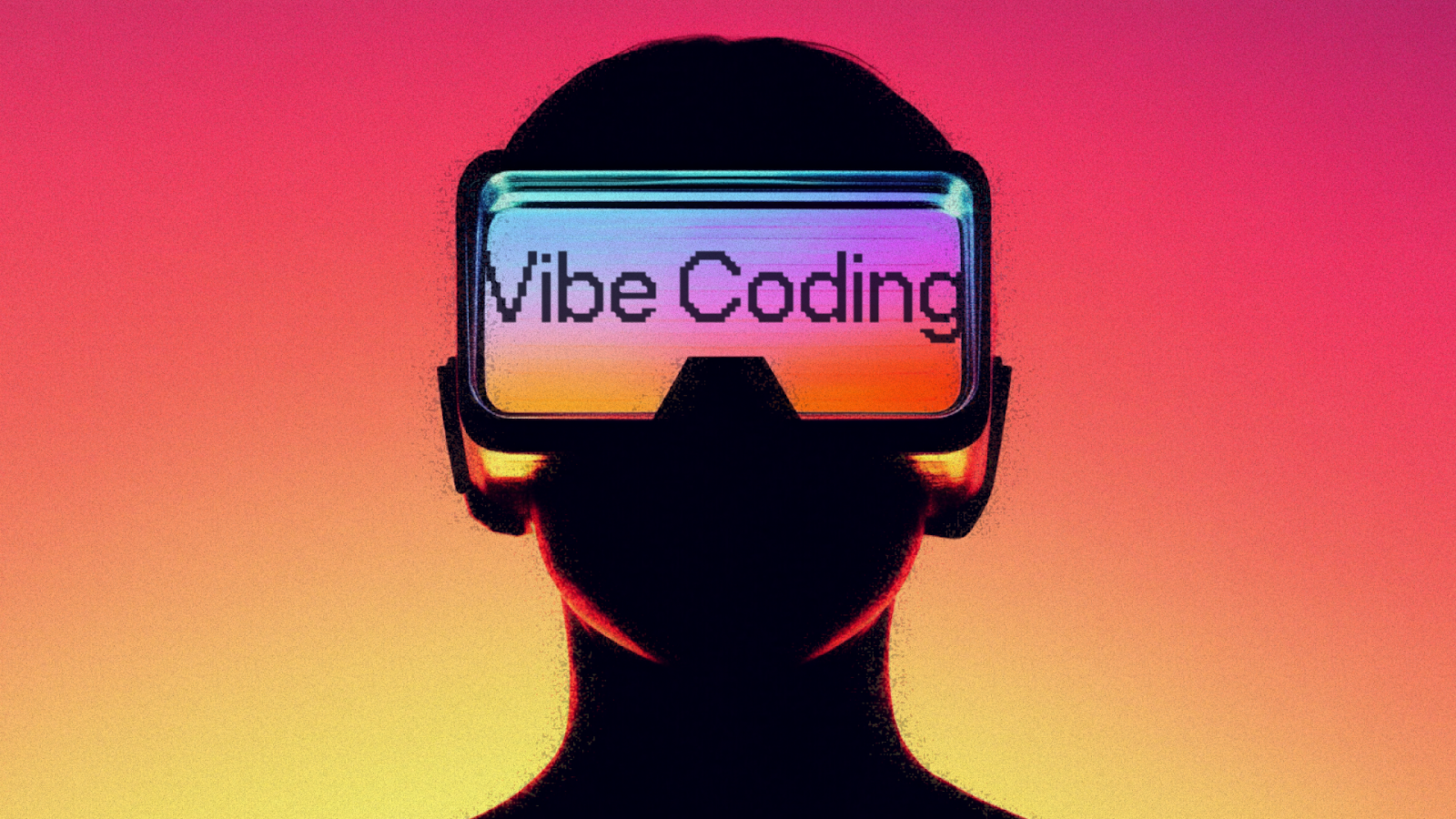Vibe Coding: The Future Or Just A Gimmick
 Magnimus
Magnimus
As an experienced developer, who has spent most of my time coding, make software designs, testing and spent countless days setting up production pipelines and automating them. Vibe coding sometimes comes off as a slap in the face for keeping myself up drinking endless coffees. Though I have been observing the rise of AI-assisted coding through mostly ChatGPT and Github Copilot, using many of them myself. But the emergence of MCP servers and idea of communicating with all my softwares using only LLMs feels surreal and futuristic indeed. Can I finally make my own J.A.R.V.I.S, after all my failed attempts?
Lets explore what is vibe coding and interpret what it means for the future of software development.
What is Vibe Coding?
Vibe coding is a new way to use AI-assisted coding through LLMs to describe a problem statement and let AI break it down and generate the required code. Imagine an assistant, trained on millions of tasks and repeatedly told to improve itself to write and understand all code as well as learn all the steps required to make it. Clearly no human is capable of doing that, but a system could.
The term “Vibe coding“ was coined by Andrej Karpathy in February 2025 with a tweet in X (Source).
He described vibe coding as literally sitting back and vibe back in your chair and let the LLMs do his thing. As someone who grew up watching his Stanford lectures on Computer Vision and AI, it came out as a bit of a shock how much AI has improved so rapidly.
Basically, Vibe coding is a conversational process where the developer articulates ideas, and the AI generates the corresponding code, allowing for rapid prototyping and development.
What are MCP Servers
In a way, Vibe coding is incomplete without MCP Servers which enables a whole new world of possibilities. “Model Context Protocol“ or MCP, for short, is an open standard protocol designed to establish a secure, two-way connection channel between data sources and AI-powered tools. Basically, a data source could be any software you use such as Visual Studio Code, Blender, Unity, Photoshop etc. and connect it to AI-powered tool such as ChatGPT, Cursor etc. Now you have the power to Vibe code with your entire stack. Just tell “Blender, create a 3D Mario Game assets, import them to Unity and code me the entire game“, and it will do just that.
Obviously you will instead end up writing 200 more prompts before seeing a good and working game. But the thing is, it will work. With an increase in MCP servers everyday, it won’t be far where programmers will turn into language prompt experts to create the softwares of the future.
At Magnimus, we are still figuring out giving the best immersive experiences for our clients, be it in VR, AR or simulators or anything else. Creativity can never be expressed with just words, and so we are not sitting back and vibe code any sooner at all.
The Good About Vibe Coding
If you are a non-tech person having a business or dreaming of one, vibe coding might be something that interests you and your team. So let’s see how can it help
Accessibility for Beginners
Vibe coding lowers the barrier to entry for those new to programming. By simply speaking your ideas, it enables non-developers to create applications without much prior knowledge about programming languages and learning the syntax of everything. It will diversify and foster more innovative methods to emerge in the tech community.
Enhanced Productivity
For experienced developers, it might reduce lots of time to off-load part of their simpler work to LLMs and MCPs. Instead of spending 2 minutes to come up with a commit message and push my code, I can offload it to an AI agent and could figure out how to make my scrappy character shoot a bullet to build my next CS:GO clone that I just dreamed of 10 minutes ago.
Rapid Prototyping
It definitely helps to have a companion to prototype your ideas, breaking it down to chunks and validate them. AI Agents can be very helpful in designing systems at a high level. Though it won’t always be best in coding complex systems and identify all edge cases, it can atleast help in design a high-level more common approach to a problem.
The Criticisms Of Vibe Coding
Every piece of technology faces criticism. But Vibe coding has sparked an immense debate in the programming, creative and design world, and rightfully so. It can change how we interact with our systems on a daily basis transforming the lifestyle of everyone involved. Let’s talk about how it affects us.
Quality and Reliability Concerns
AI coding and Agents may seem impressive, but it can generate very low quality and unreliable code that any system or hacker can breach it. Many a times, it is riddled with errors or lack of optimization that I end up revisiting my codebase more often to give it a boost. A clear oversight is always required for any AI-powered code. If you do not believe me, just look at this tweet in X (Source).
Security Risks
From the above tweet, evidently it’s a huge security risk to make softwares just by using vibe coding. Writing low-quality code will always make you regret once productionized. Don’t make simple mistakes like US Security officials or you might just bomb your codebase right out of existence.
Skill Degradation
This is one of the biggest concerns for experienced and inexperienced people. To avoid curated human skills and creativity to have a soul-less agent do your work poses risks on the human mind. It is very important to still be proficient in the fundamental knowledge to optimize yourself without drowning in the sea of data. Watch this entertaining video about Fireship explaining Vibe Coding as a “Mind Virus“ (Source).
Misuse of Creativity and No Accountability
Most of these AI agents are trained on publicly available code or art created by professionals over the year. With lack of sufficient AI governance and rules, creative work of lakhs of developers and artists are being misused. One example is the recent Ghibli studio image generation controversy started by OpenAI, which generates Ghibli AI generated art of virtually anything discrediting the works of hand-drawn artists who spend years perfecting themselves. For more, look at this video by Hayao Miyazaki back in 2016. (Source)
How To Vibe Code
This article is not about a rant on why not to vibe code. That might come in a later article. Here, I just want you to understand what it is about and how you can still approach it with extreme caution. Though it’s still a development towards a futuristic world, it is important to upskill yourself. In fact, Quick-skill yourself towards it, if it interests you. Below are some tools to try right now.
ChatGPT AI Agents and Reasoning
DeepSeek
Cursor
Replit
Windsurf
Blender Claude MCP
Conclusion
“Vibe coding“ is just a phase in human innovation which feels very futuristic and mature but is at a very nascent stage. It’s funny to think about how human innovation in artificial intelligence is leading to replacing the ones who made it. But even with all the data in the world, this system is just like a baby in its crib. But it’s not to say that this form of coding won’t evolve further into something extraordinary limited only to creative brilliance.
Human creativity is the ultimate truth.
My advice to decision makers is not to be hasty to replace any of your workflows with AI systems yet. Keep your human friends close and just use an AI agent like a calculator, only when required.
Who is Magnimus?
We at Magnimus, are working on creating immersive experiences and training in various fields such as defense, manufacturing, heavy industries etc. We are pioneering innovation in XR and AI technologies like VR, AR and MR to drive productivity and innovation across industries. Creative work is the forefront of our work and we are here to partner with industry giants who want to transform their workforce using technologies of the future using XR and AI.
📩 Contact Magnimus today for a free consultation and explore the next evolution of technology!
🔎 Related Reads & Sources
🔗 XR and AI in Industries 🔗Haptics in Industrial simulations
Subscribe to my newsletter
Read articles from Magnimus directly inside your inbox. Subscribe to the newsletter, and don't miss out.
Written by
